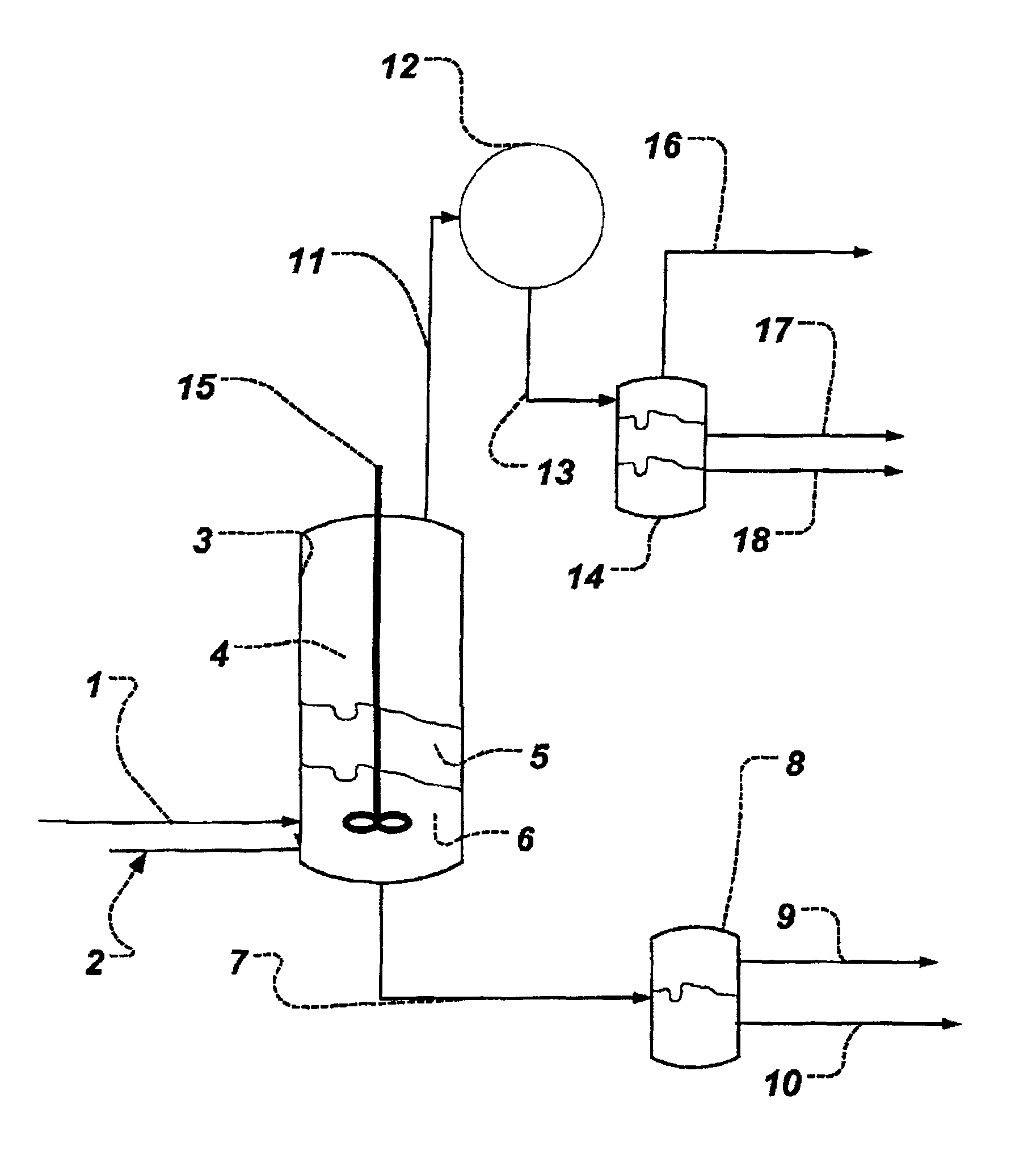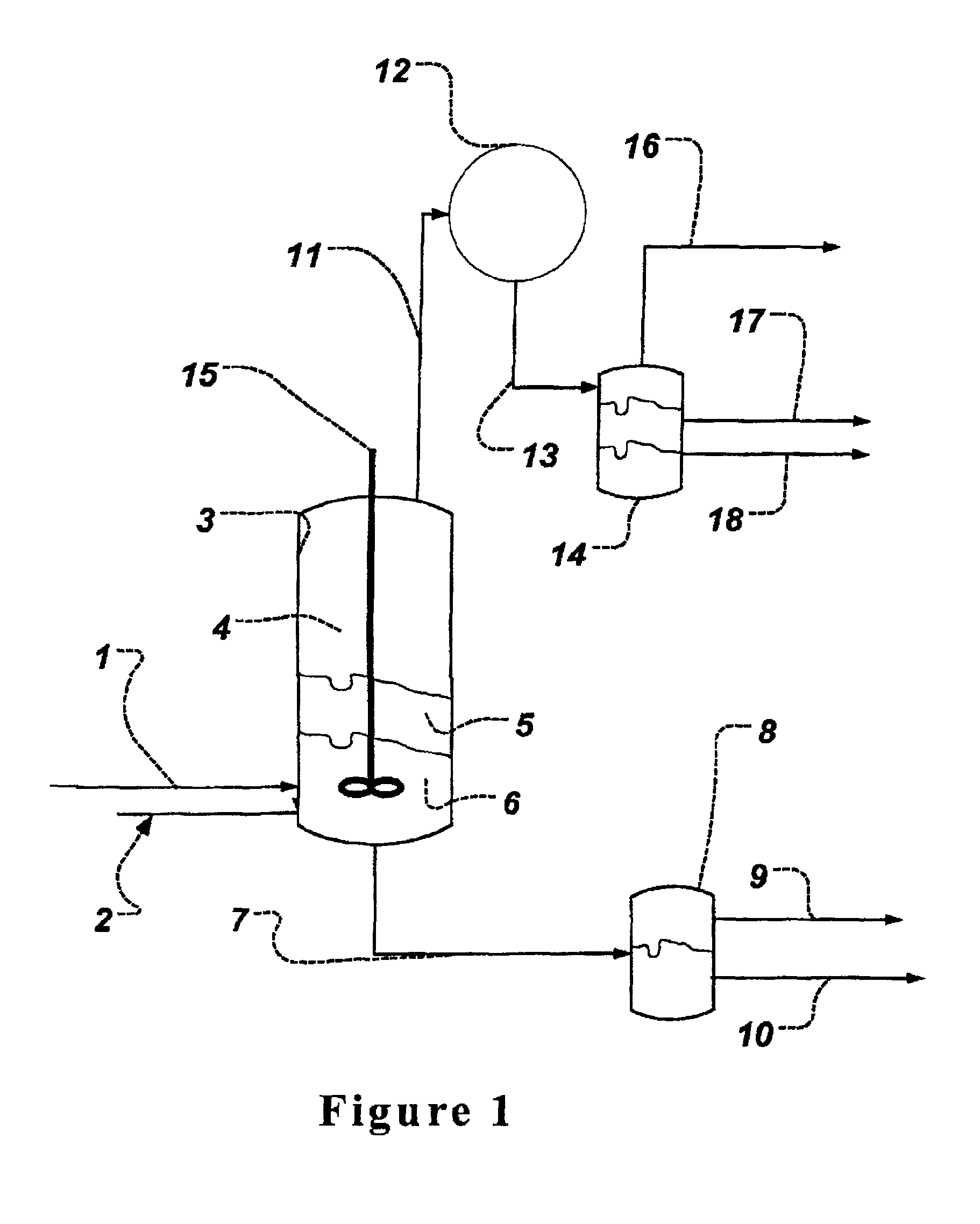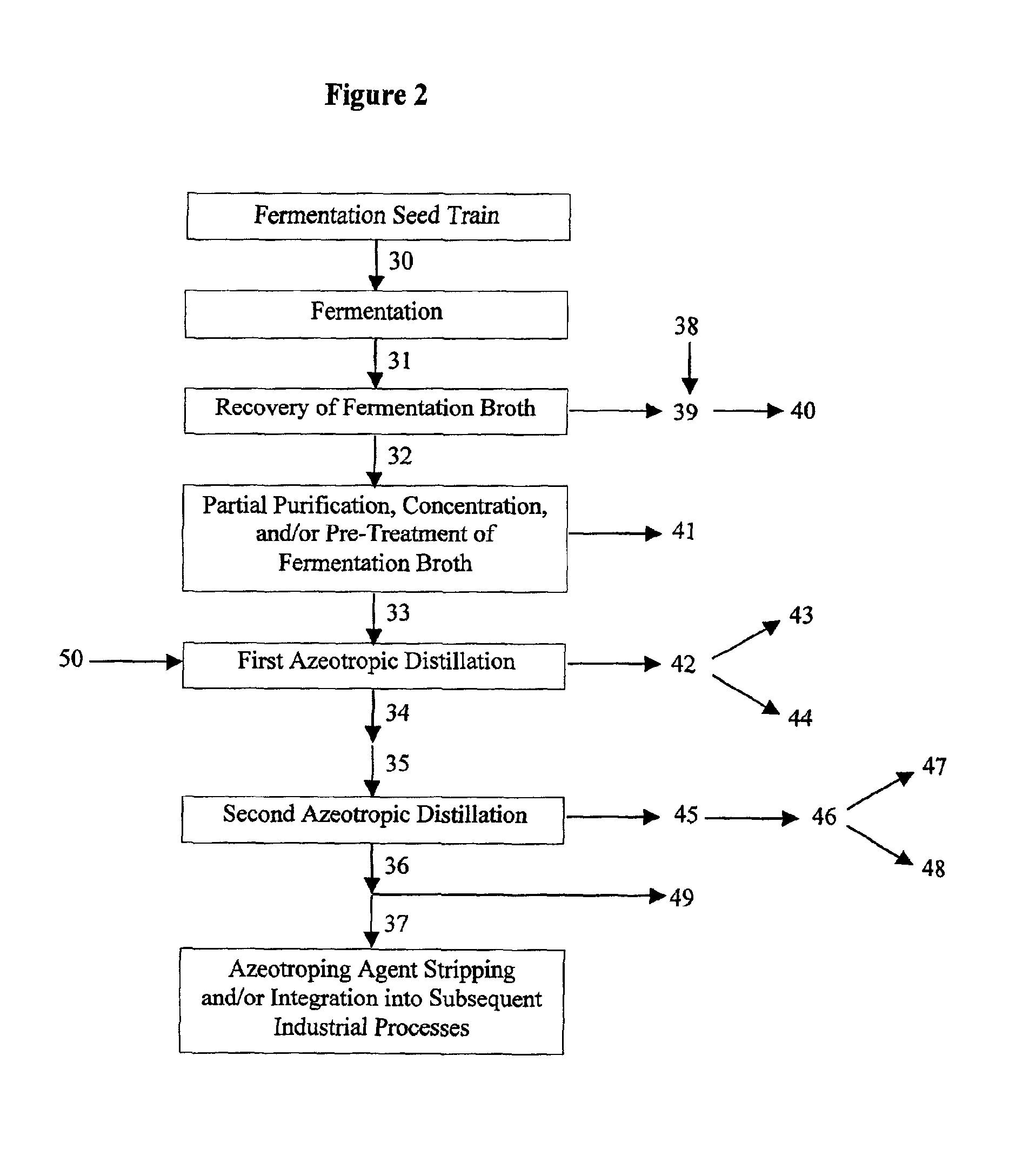Process for obtaining an organic acid from an organic acid ammonium salt, an organic acid amide, or an alkylamine organic acid complex
a technology of organic acid and organic acid, which is applied in the separation process, vacuum distillation separation, azeotropic distillation, etc., can solve the problems of difficult chemical synthesis to prepare a higher proportion of a particular optical isomer, unsatisfactory color, and interference with downstream processing, so as to achieve simple and cost-effective organic acid recovery
- Summary
- Abstract
- Description
- Claims
- Application Information
AI Technical Summary
Benefits of technology
Problems solved by technology
Method used
Image
Examples
example 1
Addition of 95% Ammonium Lactate Aqueous Droplets to Hot N-dodecane Liquid in Flash Decomposition
[0086]A feed comprising ammonium lactate that had previously been analyzed by Karl Fisher analysis, ammonia electrode and HPLC and was found to contain the compositions shown below in the Table 1 along with small amounts of impurities like pyruvic acid and a compound eluting at about the same retention time as oxalic acid. Despite care being taken to minimize lactamide formation in this 95 wt % ammonium lactate feed stream (e.g., the ammonium lactate was prepared at neutral pH using a continuous controlled metered feed of cold lactic acid and ammonia, using evaporation under reduced pressure, and benzene azeotropic drying under reduced pressure) there was still about 1.59 wt % lactamide present in this feed stream. However, analysis has shown that lactamide can be present even in unprocessed fermentation broth at low levels (e.g., 0.3 wt % of total lactic acid values).
[0087]N-dodecane (a...
example 2
Addition of Ammonium Lactate Droplets to Hot Condensing Diethylbenzene Vapors in Flash Decomposition
[0091]The same equipment was used for Examples 2 and 3 and a schematic of the equipment is depicted in FIG. 3. The system was built entirely from stainless steel and can be operated at pressures from full vacuum to 400 psig and up to 240° C. A feed stream pump 10 is used to feed 90-95 wt % ammonium lactate 12 to the flash reactor 24. A solvent stream pump 14 is used to feed solvent 16 to a solvent boiler 18. The solvent is heated to a temperature of about 30° C. higher than the boiling point of the solvent. The solvent vapor 20 is brought into contact with the droplets of the ammonium lactate feed stream at 22. The ammonium lactate and solvent mixture 22 is heated in the flash reactor 24 to achieve thermal decomposition of the ammonium lactate. The liquids bottoms from the flash reactor are collected in the receiver 26. Vapor from the flash reactor goes through the vapor riser 28 and ...
example 3
Addition of Ammonium Lactate Droplets to Hot Condensing Hexadecane Vapors in Flash Decomposition
[0094]This example was performed similarly to Example 2, but with hexadecane as the solvent instead of diethylbenzenes. The temperature and pressure of the flash reactor were maintained at about 205° C. and 15 kPaa. About 32.9% of the ammonia was removed. Some of the lactic acid (about 4.8 wt %) released by thermal decomposition of ammonium lactate was converted to new lactamide that was not originally present in the ammonium lactate feed stream. The bottoms stream 26 had a water content of about 1.27 wt %. The bottoms heavy phase was very viscous and flowed poorly at 20° C. This example showed that it is possible to simultaneously decompose ammonium lactate into ammonia and free lactic acid, to take the ammonia into the vapor phase, and to also take lactic acid into the vapor phase and leave behind heavy impurities in the bottoms phase.
PUM
| Property | Measurement | Unit |
|---|---|---|
| boiling point | aaaaa | aaaaa |
| boiling point | aaaaa | aaaaa |
| boiling point | aaaaa | aaaaa |
Abstract
Description
Claims
Application Information
 Login to View More
Login to View More - R&D
- Intellectual Property
- Life Sciences
- Materials
- Tech Scout
- Unparalleled Data Quality
- Higher Quality Content
- 60% Fewer Hallucinations
Browse by: Latest US Patents, China's latest patents, Technical Efficacy Thesaurus, Application Domain, Technology Topic, Popular Technical Reports.
© 2025 PatSnap. All rights reserved.Legal|Privacy policy|Modern Slavery Act Transparency Statement|Sitemap|About US| Contact US: help@patsnap.com



